
Linz is the capital of Upper Austria and third-largest city in Austria. In the north of the country, it is on the Danube 30 kilometres south of the Czech border. In 2018, the population was 204,846.
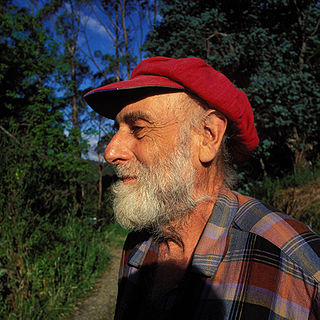
Friedrich Stowasser, better known by his pseudonym Friedensreich Regentag Dunkelbunt Hundertwasser, was an Austrian visual artist and architect who also worked in the field of environmental protection.

The Belvedere is a historic building complex in Vienna, Austria, consisting of two Baroque palaces, the Orangery, and the Palace Stables. The buildings are set in a Baroque park landscape in the third district of the city, on the south-eastern edge of its centre. It houses the Belvedere museum. The grounds are set on a gentle gradient and include decorative tiered fountains and cascades, Baroque sculptures, and majestic wrought iron gates. The Baroque palace complex was built as a summer residence for Prince Eugene of Savoy.

The Kunsthistorisches Museum is an art museum in Vienna, Austria. Housed in its festive palatial building on Ringstraße, it is crowned with an octagonal dome. The term Kunsthistorisches Museum applies to both the institution and the main building. It is the largest art museum in the country and one of the most important museums worldwide.

The Neue Galerie New York is a museum of early twentieth-century German and Austrian art and design located in the William Starr Miller House at 86th Street and Fifth Avenue in New York City. Established in 2001, it is one of the most recent additions to New York City's famed Museum Mile, which runs from 83rd to 105th streets on Fifth Avenue in the Upper East Side of Manhattan.
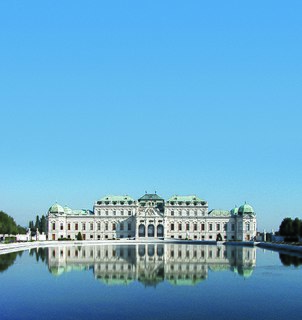
The Österreichische Galerie Belvedere is a museum housed in the Belvedere palace, in Vienna, Austria.
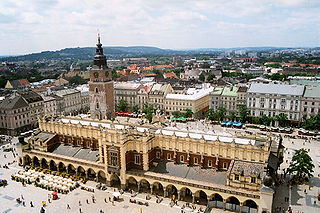
The Kraków Cloth Hall, in Lesser Poland, dates to the Renaissance and is one of the city's most recognizable icons. It is the central feature of the main market square in the Kraków Old Town, which since 1978 has been listed as a UNESCO World Heritage Site).

The Museum of Islamic Art (MIA) in Cairo, Egypt is considered one of the greatest museums in the world, with its exceptional collection of rare woodwork and plaster artefacts, as well as metal, ceramic, glass, crystal, and textile objects of all periods, from all over the Islamic world.
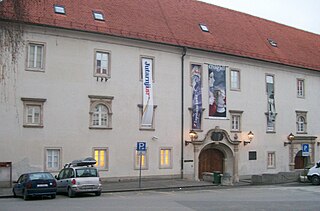
Klovićevi Dvori Gallery is an art gallery in Zagreb, Croatia. Opened in 1982, the gallery is named after the 16th century Croatian-born artist Juraj Julije Klović, considered to be one of the greatest manuscript illuminators of the Italian Renaissance.

Ambras Castle is a Renaissance castle and palace located in the hills above Innsbruck, Austria. Ambras Castle is 632 metres (2,073 ft) above sea level. Considered one of the most popular tourist attractions of the Tyrol, Ambras Castle was built in the 16th century on the spot of an earlier 10th-century castle, which became the seat of power for the Counts of Andechs. The cultural and historical importance of the castle is closely connected with Archduke Ferdinand II (1529–1595) and served as his family's residence from 1567 to 1595. Ferdinand was one of history's most prominent collectors of art. The princely sovereign of Tyrol, son of Emperor Ferdinand I, ordered that the medieval fortress at Ambras be turned into a Renaissance castle as a gift for his wife Philippine Welser. The cultured humanist from the House of Habsburg accommodated his world-famous collections in a museum: the collections, still in the Lower Castle built specifically for that museum's purpose, make Castle Ambras Innsbruck one of the oldest museums in the world.

The Department of Asia in the British Museum holds one of the largest collections of historical objects from Asia. These collections comprise over 75,000 objects covering the material culture of the Asian continent, and dating from the Neolithic age up to the present day.

The Kunsthaus Bregenz (KUB) presents temporary exhibitions of international contemporary art in Bregenz, capital of the Austrian Federal State of Vorarlberg. Commissioned by the State of Vorarlberg and designed by the Swiss architect Peter Zumthor, it was built between 1990 and 1997.

Preparing for the Matinee is an oil painting by American artist Edmund C. Tarbell, created in 1907. It is currently part of the permanent collection at the Indianapolis Museum of Art.
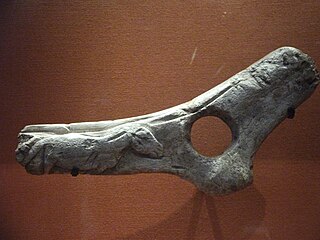
Dating to the last Ice Age, this decorated fragment of a perforated antler baton was discovered in 1863 by Edouard Lartet and Henry Christy at the Abri de la Madeleine, an overhanging cliff situated near Tursac, in the Dordogne département and the Aquitaine Région of South-Western France. This is the type-site for the Magdalenian culture. It was bequeathed to the British Museum by Christy, and is now catalogued as Palart.310, but not normally on display. The baton is 16.6 cm long, 5.5 cm wide and 3 cm thick. The fragment is broken at both ends and is distinguished by a near-cylindrical section, which is interrupted on one side by a horse motif, and on the other side by three deeply cut grooves.

Portrait of Mariana of Austria is a 1652–1653 oil-on-canvas painting by Diego Velázquez, the leading artist of the Spanish Golden Age, existing in a number of versions. Its subject, Doña Mariana, was the daughter of Emperor Ferdinand III and Maria Anna of Spain. She was nineteen years old when the painting was completed. Although described as vivacious and fun-loving in life, she is given an unhappy expression in Velázquez's portrait. The portrait is painted in shades of black and red, and her face is heavily made up. Her right hand rests on the back of a chair, and she holds a lace handkerchief in her left hand. Her bodice is decorated with jewellery, including a gold necklace, bracelets and a large gold brooch. A clock rests on scarlet drapery behind her, signifying her status and discernment.

Maria Baumgartner is an Austrian studio potter and was professor of ceramics at the University of Arts and Industrial Design Linz.
Galerie St. Etienne is an Expressionism art gallery operating in the United States, founded in Vienna in 1923 by Otto Kallir as the Neue Galerie. Forced to leave Austria after the 1938 Nazi invasion, Kallir established his gallery in Paris as the Galerie St. Etienne, named after the Neue Galerie's location near Vienna's Cathedral of St. Stephen. In 1939, Kallir and his family left France for the United States, where he reestablished the Galerie St. Etienne on 46 West 57th Street in New York City. The gallery still exists, run by Otto Kallir's granddaughter Jane and Hildegard Bachert on 24 West 57th Street. It maintains a reputation as a principal harbinger of Austrian and German Expressionism to the US.

The miniature altarpiece in the British Museum, London, is a very small portable Gothic boxwood miniature sculpture completed in 1511 by the Northern Netherlands master sometimes identified as Adam Dircksz, and members of his workshop. At 25.1 cm (9.9 in) high, it is built from a series of architectural layers or registers, which culminate at an upper triptych, whose center panel contains a minutely detailed and intricate Crucifixion scene filled with multitudes of figures in relief. Its outer wings show Christ Carrying the Cross on the left, and the Resurrection on the right.
Martin Hochleitner is an Austrian art historian and since 2012, curator of the Salzburg Museum.
















